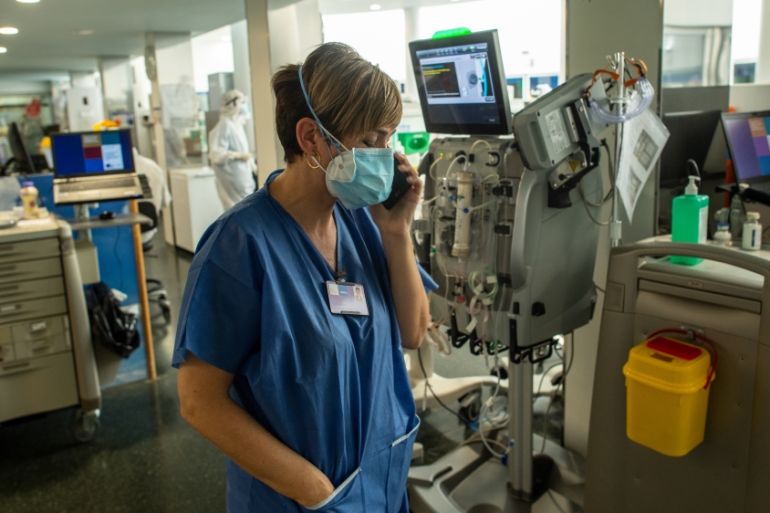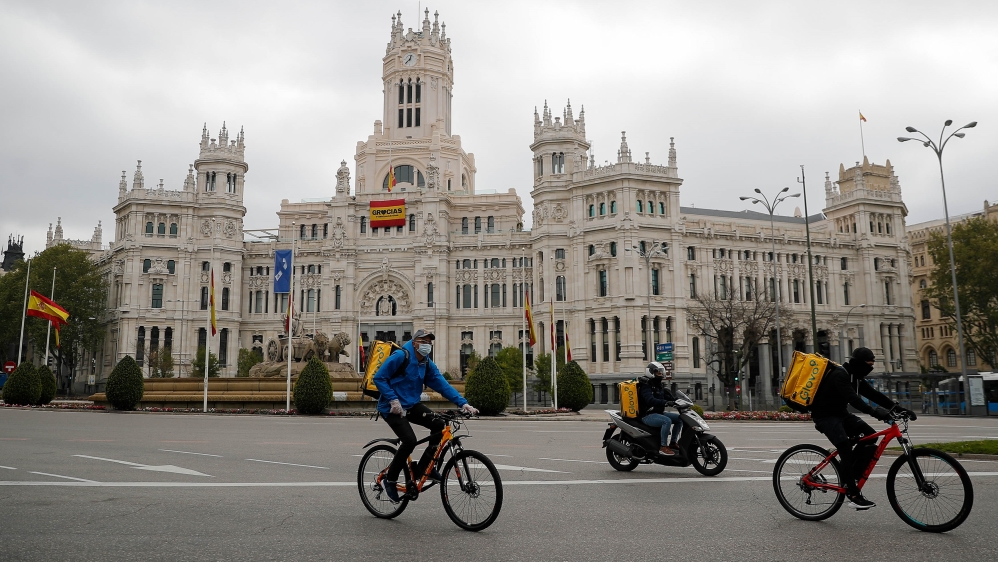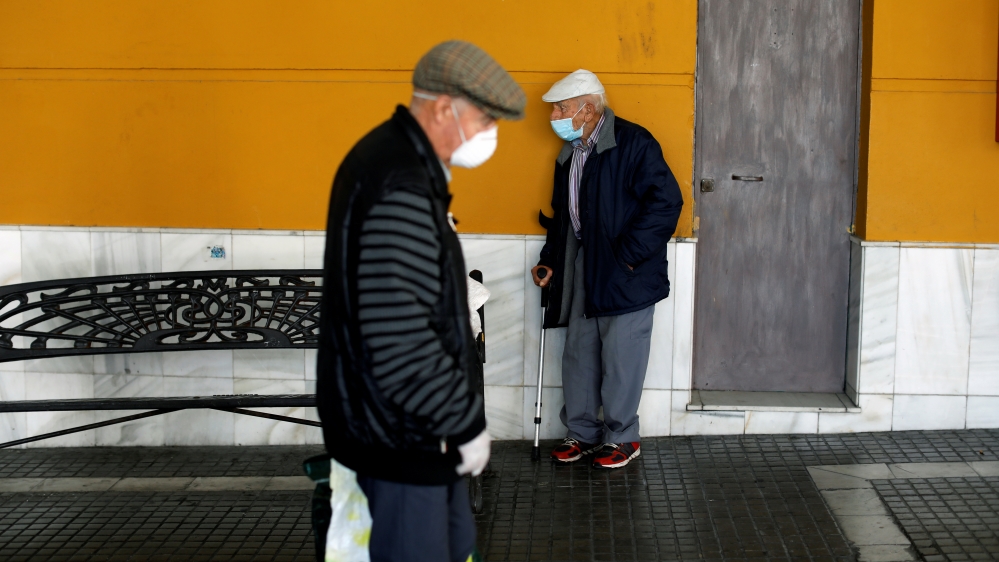Has Spain flattened the coronavirus curve and what comes next?
Amid cautious optimism as COVID-19 deaths slow, experts seek more testing as doctors say pressure on ICU remains high.

Granada, Spain – For weeks, Spain has held the grim title of suffering the second-highest coronavirus death toll in Europe, trailing only Italy.
Displays of courage and resilience by beleaguered health workers, images of ice rinks used as emergency morgues, reports of bodies left abandoned in old people’s homes and of hospital staff resorting to rubbish bags and raincoats in a desperate bid to protect themselves and others now form part of the national consciousness.
Keep reading
list of 4 itemsMexico’s teachers seek relief from pandemic-era spike in school robberies
‘A bad chapter’: Tracing the origins of Ecuador’s rise in gang violence
Why is the US economy so resilient?
And this is all since March 14.
But has some kind of corner been turned in Spain’s battle against coronavirus?
On Wednesday, coronavirus deaths in Spain for the previous 24 hours stood at 523, which while high, represented a notable improvement on the total of 950 less than two weeks before.
It is also the fourth total under 600 in five days.
While the number of registered contagions in the last 24 hours increased by 3 percent, to 177,633, health authorities partly attributed that rise to an increase in testing.
In any case, the picture looks better than Spain’s maximum daily increase of affected cases of 42 percent.

“All epidemics form a kind of wave, and it seems like we’re over the top of that wave and on the way down,” Professor Juan Ayllon Barasoain, head of the Department of Preventative Medicine and Public Health at the University of Burgos in northern Spain, told Al Jazeera.
“This pandemic is following its natural course, partly because you’d expect it to behave like that, partly because the lockdown and other measures are beginning to work. Its peak, that worst moment, was not as bad as it could have been.”
There is widespread agreement that Spain’s currently limited programme of testing, estimated at 15,000 to 20,000 a day in early April, needs to be increased for a more accurate evaluation.
“We have a partial photo for now, and although it’s indicative of trends, we do need more information,” said Ayllon.
Joan Benach, professor of public and occupational health at the Pompeu Fabra University in Barcelona, told Al Jazeera: “We don’t know exactly how many infections there are and have been in Spain, and geographically speaking, we don’t know where they are. We’re lacking data.
“Right now, what [little data] we have gives the impression that thanks to the measures of containment that have been applied in the last few weeks, we’ve got over the peak.”
Another possible indicator on the pandemic’s progress is the pressure on Spain’s intensive care wards – it’s barely easing, according to the head of Spain’s health emergency committee, Fernando Simon.
Speaking on Tuesday, he attributed this in part to a backlog of cases building up.
An ICU hospital doctor in Toledo in central Spain, who requested anonymity, told Al Jazeera: “The situation is better than last week, but the ICUs are still under strain, particularly given that the number of places available have increased considerably in the last few weeks.
“The number of patients in need of admission has dropped off a great deal.
“But the overload on the ICU system remains, partly because the average length of admission for coronavirus is around 20 days, so many cases we’ve had from the start are still there in hospital.”
More than 95 percent of cases in ICUs were still for coronavirus, she added.
“Madrid – which we all follow closely, being just 60 kilometres away and the worst affected – is in the same situation: fewer admissions but ICUs still overflowing. For weeks the situation has been terrifying.”
For the medical staff, the end of the epidemic cannot come soon enough.
“Physically, we can manage, you help each other, but the psychological cost on us has been really terrible,” said the ICU doctor.
“You had to harden your heart, because the hospitals didn’t have the resources for everybody and many people die, and you were choosing who made it through and who didn’t.”

Amid guarded optimism, warnings of a data dearth and recognition that the corner has yet to be turned in Spanish hospitals ICUs, on Monday the government eased a lockdown, allowing some non-essential workers to return to work.
Until now the lockdown has been largely successful.
Over the weekend, Spanish police said 94 percent of people they questioned as to why they were not at home had acceptable explanations.
But the effects of its partial easing, and whether this could create a second peak of cases, remain to be seen.
“It could go either way,” professor Benach said, “and it depends a lot on how citizens react. Facemasks have been distributed at public transport hubs and with a high degree of social awareness of the measures needed, we can probably contain a fresh outbreak.
“But it’s a very open-ended scenario and not one that provides the kind of information we need in order to predict what is going to happen.”
To get a clearer picture of the current situation, the government recently announced that 60,000 tests will be carried out on a random selection of the population to understand the extent of the pandemic.
Simultaneously health authorities were asked on Monday to provide much fuller details on each death attributable to coronavirus.
As for Spain’s embattled front-line medical staff, they are exhausted but full of hope.
“I am optimistic even if my colleagues tell me I shouldn’t be,” the hospital doctor in Toledo told Al Jazeera. “And it’s true, we’re worried about a second outbreak.
“But I just hope it doesn’t happen. Because we’re reaching such a level of exhaustion right now, that we just couldn’t cope.”
